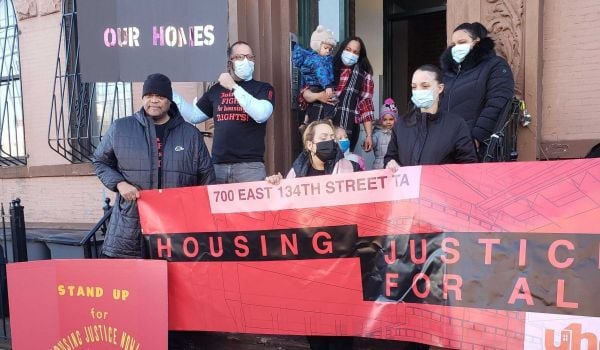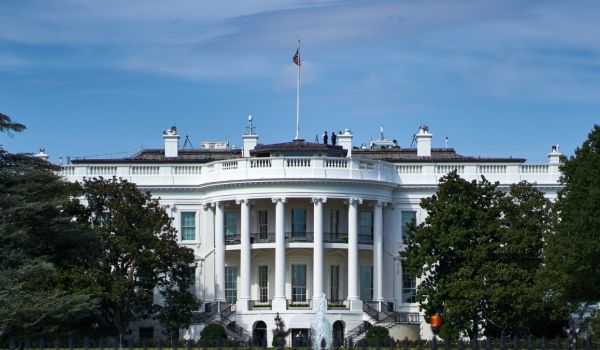I was born in downtown Flushing, New York, in the post-1965 wave of South Asian immigration to the area. I spent a lot of time during my childhood there: my parents would park in Municipal Parking Lot #1, then take me to Roosevelt Avenue to shop for shoes at Thom McAn and to eat at Lucia Pizza. At the time, there was still a strip of South Asian stores on Main Street.
I was therefore shocked when I learned, decades later, that the lot where we parked was once a home to a thriving, integrated Black community. In the early-to-mid-20th century downtown Flushing, near 37th Avenue and Union Street, was the site of a racially-mixed residential neighborhood called “Black Dublin,” due to its Black and Irish populations.
Telling the story of Black Dublin, as locals are attempting to do through initiatives such as the Queens Memory Project, is in part one of memorialization. But it’s also the remembrance of a 70-year process of displacement of Black communities, and then other working-class communities of color, that continues today. Rapid and intense “development” has changed downtown Flushing from an idyllic suburban and even rural area, when it was first connected to the rest of New York City by public transit in 1928, into today’s crowded and increasingly high-rise-laden urban landscape.
Add to the rapidity of the change the fractured sense of community, the racial mistrust in the neighborhood and the complicity of policymakers, and working class communities seem to have no hope of fighting back. “There’s no way to keep up,” says Jason Antos, executive director of the Queens Historical Society. “You have to just hold out as long as you can.”
In the case of Black Dublin, in the late 1940s, a coalition of local middle class women’s groups with 6,000 members conducted “a campaign to expose slum conditions in which large and needy families were being forced to exist in the parking-lot area as it was then,” as the Long Island Star Journal reported at the time.
This was part of a twin push by these white middle-class activists, developers and city planners for “improving” the standards of housing of the residents and for displacing those residents to create space for parking. By the time the 1953 groundbreaking was taking place for Municipal Parking Lot #1, the infamous urban planner Robert Moses – the father of so-called urban renewal – was describing the area as having been “the worst [slum] area in the borough.”
Scholar Tarry Hum’s research contests the depiction of the area as a slum based on photographs from the era. “Although city officials referred to this area as ‘the jungle’ made up of ‘ramshackle dwellings’ which posed ‘a moral problem’ to the business sector, the photos of the lots surrounding the Macedonia AME Church do not show a blighted neighborhood,” she writes.
But as a result of this urban renewal project, Black Dublin was razed in 1952. “A way of life was destroyed as members of the African-American community were scattered,” the Macedonia AME church situated in the same neighborhood later wrote. The Black and Irish residentially-mixed neighborhood was taken by the city so that middle-class white shoppers from Flushing and neighboring communities could have places to park their cars.
About 250 families were displaced, as were several dozen businesses. The Black residents were shipped off to one federal housing project (the Bland Houses), while the white residents were sent to another (the Pomonok Houses).
Even a neighboring bus depot was also torn down, says Queens borough historian Jack Eichenbaum, leaving recent generations of Flushing commuters to wait for their buses alongside busy Roosevelt Avenue. The community, in other words, had been displaced and reshaped for white middle-class customers and their cars.
The Macedonia AME church was only left standing, according to the church’s former historian, Jay Williams. Because there were bodies buried there, he says, its leaders were able to successfully argue that it lay on “hallowed ground.”

(Photo by Saurav Sarkar)
Williams’ own family had owned land in Black Dublin. In an oral interview conducted by the Queens Memory Project, Williams says his family was paid a “miniscule” amount compared to the present value of the land. Their parcel of land, he recalls, was big enough to house a large multi-family apartment building today.
The pressure on downtown Flushing’s working class didn’t stop in the 1950s. “Flushing has been on a steady incline of development since after World War II,” says Jason Antos, Executive Director of the Queens Historical Society.
By the 2010s, even church officials at Macedonia AME were readying to leave the site. In 2017, the Macedonia AME church was sold to developers and torn down, despite concerns over possible human remains still buried there. Its services were relocated to Jamaica, Queens – some fear permanently.
Pastor Carlton Mobley of Ebenezer Baptist Church, the other Black church in Flushing, says parishioners were not happy with the move. His church leadership, too, remains wary of developers eyeing its Prince Street property as part of redevelopment in that section of Flushing.
Macedonia AME’s parishioners are supposed to receive space in whatever high-rise property goes up, per 2018 court filings, but some observers are skeptical that the church will ever be able to come back to Flushing. In place of the Macedonia AME, which had been founded more than two centuries ago by white, Black and Native American residents and served as a stop on the Underground Railroad, an empty lot now stands next to a newly repaved parking lot and a mixed residential and commercial building. In front of the scaffolding, a street sign and a signpost along Flushing’s “Freedom Trail” for tourists, mark where the church once stood and its historic significance.
Walking along the street in late spring, I spotted a poignant graffiti message on the scaffolding in front of the empty lot: “Where is the church?”
A few months later, the graffiti had disappeared, like so many pieces of Flushing’s Black history: the colonial past and the descendants of Black slaves in the area, the heyday of the Underground Railroad, Black Dublin, the racial justice stances of Ebenezer Baptist Church’s activist Rev. Timothy Mitchell. The community still lingers, though; churchgoers to Ebenezer and their descendants still come for services even from beyond Flushing, and Pastor Mobley is reaching out to Black residents in the area.
But today, much of the effort to protect Black Flushing has become about commemoration rather than preservation, let alone growth.
Ironically, another forgotten gravesite nearby has been the source of a successful historical preservation effort of local Black history in the last two decades. A New Deal-era park was found to have been built upon a cholera graveyard; many of the bodies came from Macedonia AME church. In the 1990s, a group of Queens activists began fighting for the park to be marked in some way and have successfully pushed the city to establish The Olde Towne of Flushing Burial Ground. They also set up a conservancy to promote respect for the gravesite and transform it from a site of recreation to more of one of remembrance.
The Queens Memory Project, the source of Williams’ oral history accounts, is another effort to save Black history of a more recent vintage in Flushing. The community archiving project is a 12-year-old joint collaboration of Queens College and the Queens Public Library and contains about 1,000 oral histories, including that of Williams.
“If there aren’t places where you can learn more about what the neighborhood was like even a couple of years ago, that’s the type of gap that Queens Memory is often trying to fill, by recording people’s stories of what they have seen,” says Meral Agish, community coordinator for the library’s side of the Queens Memory Project.
As with so many other crimes in the United States, what was first done to Black working-class folks is now being done to other working class communities of color, too. They, and what remains of Flushing’s Black working class, face the challenge of fighting overdevelopment today, the kind that finally did in Macedonia AME.

(Photo by John C. Chu / CC BY-NC-ND 2.0)
“Ethnic displacement has been ongoing since the 1950s when Robert Moses converted Flushing from an integrated neighborhood that was reliant on public transit into a neighborhood that is car-centric and based on the speculation of land,” says John Choe, Executive Director of the Greater Flushing Chamber of Commerce. The organization is a member of the coalition Flushing for Equitable Development and Urban Planning (FED UP).
“The forms are different, but the use of coercive state violence hasn’t changed…It’s this cycle of the financial and real estate elites using those profits to leverage and establish their political power and then using their political power to solidify the rigged economy that has been created the last half century,” he says.
In the past 20 years, especially, things have taken a turn. New York City’s planners and developers went into overdrive building out in Flushing. Joseph Jung, an activist with the Flushing Anti-Displacement Alliance (FADA), says, “We are under no illusion that the primary reason Flushing is [where the city set its sights for mass-scale development] is because they view this as a community that they don’t think is very empowered.”
It’s a link, he says, between the displacement Flushing faced in 1952 and what locals are struggling against today. Downtown Flushing residents today are often renters, people of color, immigrants or people with limited English, Jung notes.
From 2009 to 2019, Flushing saw the highest number of condos built in New York outside Williamsburg. Community activists with FADA say many more have been sanctioned already, with the 2020 approval of a waterfront district with special zoning laws.
Both FADA and FED UP clashed with developers, now increasingly flush with transnational cash especially from Chinese investors, but ultimately lost. The project will ostensibly expand downtown Flushing, but critics say Flushing has no need for more luxury housing. Some also think the project’s potential environmental cost is too high.
One of the reasons such coalitions are likely to consistently lose in today’s downtown Flushing is that they need a unified community behind them to work. But the constant churn of development and dispossession has increasingly atomized Flushing’s residents. “It’s just too much where you don’t know anybody. When we were growing up in Flushing [in the 1940s], we knew everybody,” says Williams.
Decades of racial mistrust among Flushing’s various ethnic communities have also caused problems. Rather than seeing the issue as one of developers against the working class of all stripes, some are wont to see the problem as “the Chinese taking over,” neglecting the reality that working-class Chinese are living in poverty in the neighborhood and are also victims of hyper-development.
Hailie Kim, housing organizer for local community group MinKwon, also a member of FED UP, says that this has pushed her organization to focus on community building as a core component of their anti-displacement work, which is couched in the context of stopping hate violence. She finds hope in the small victories.
But not everyone does, and it’s hard to argue. An enormous number of bridges have to be built to stop maddening levels of luxury development. By the time they might be created – if they even can be – several more high rises have already gone up. When asked if the working class stands a chance in downtown Flushing, Antos’ response is flat: “No.”
Saurav Sarkar is a freelance movement writer, editor and activist based in New York.
















